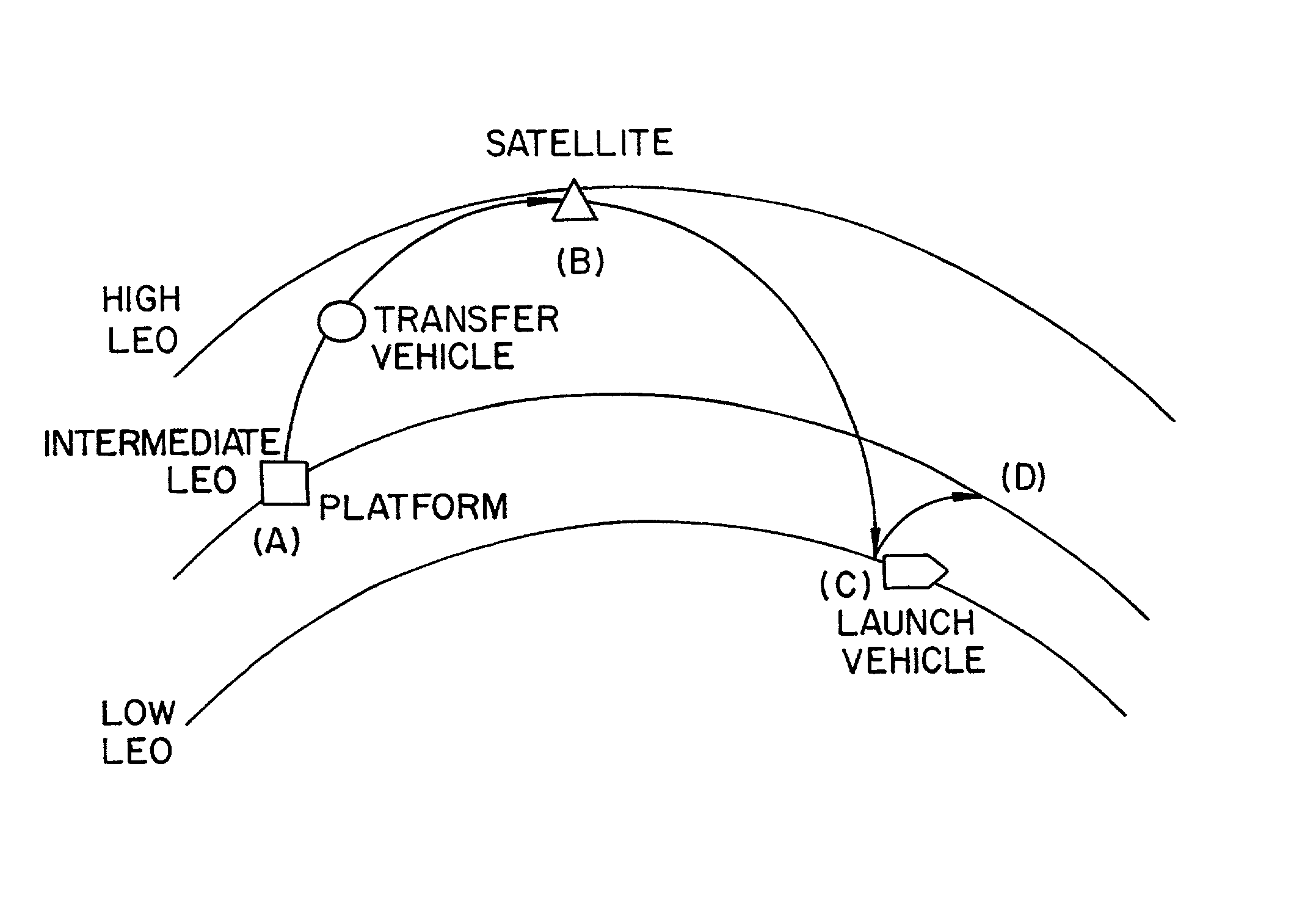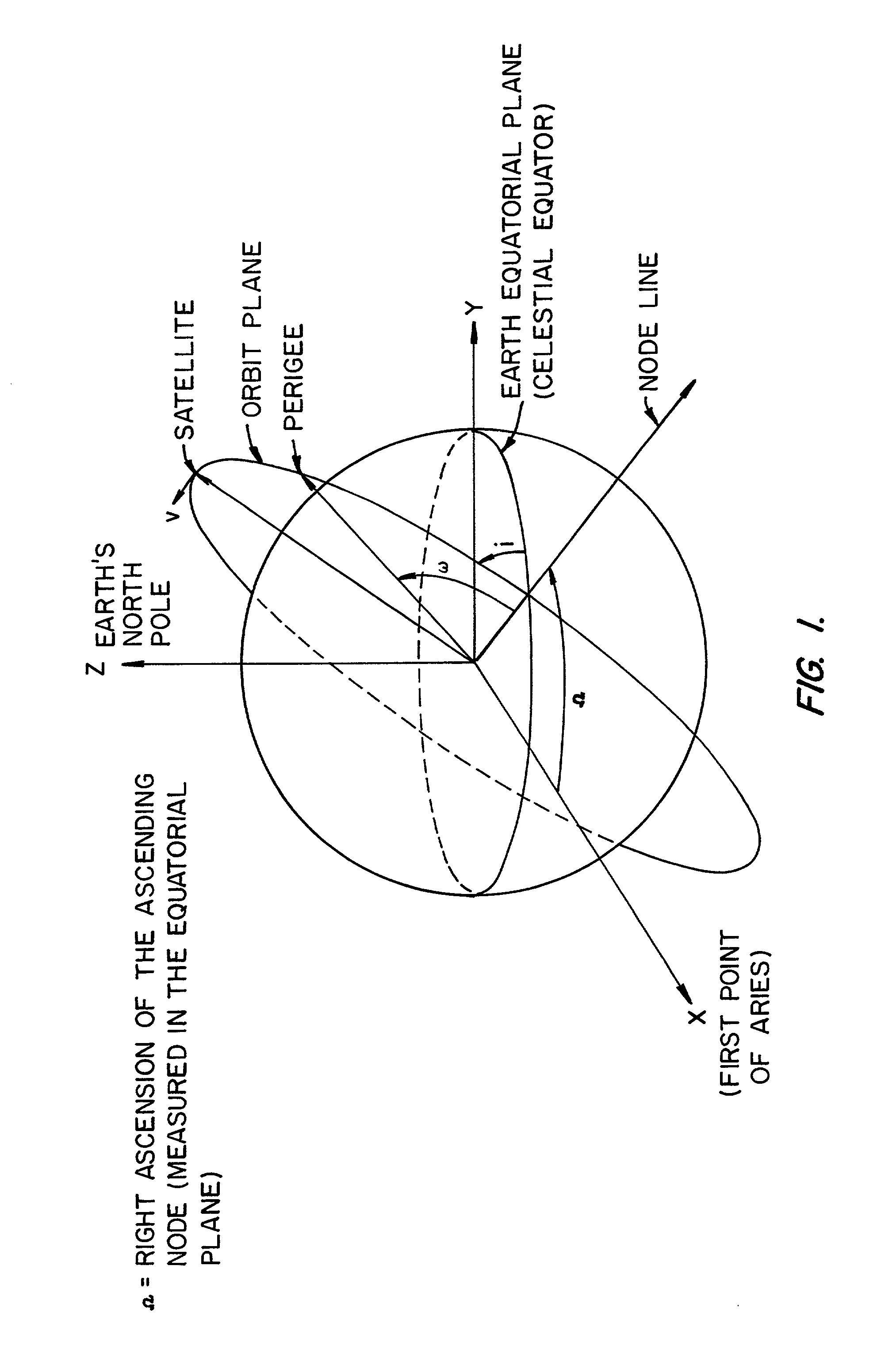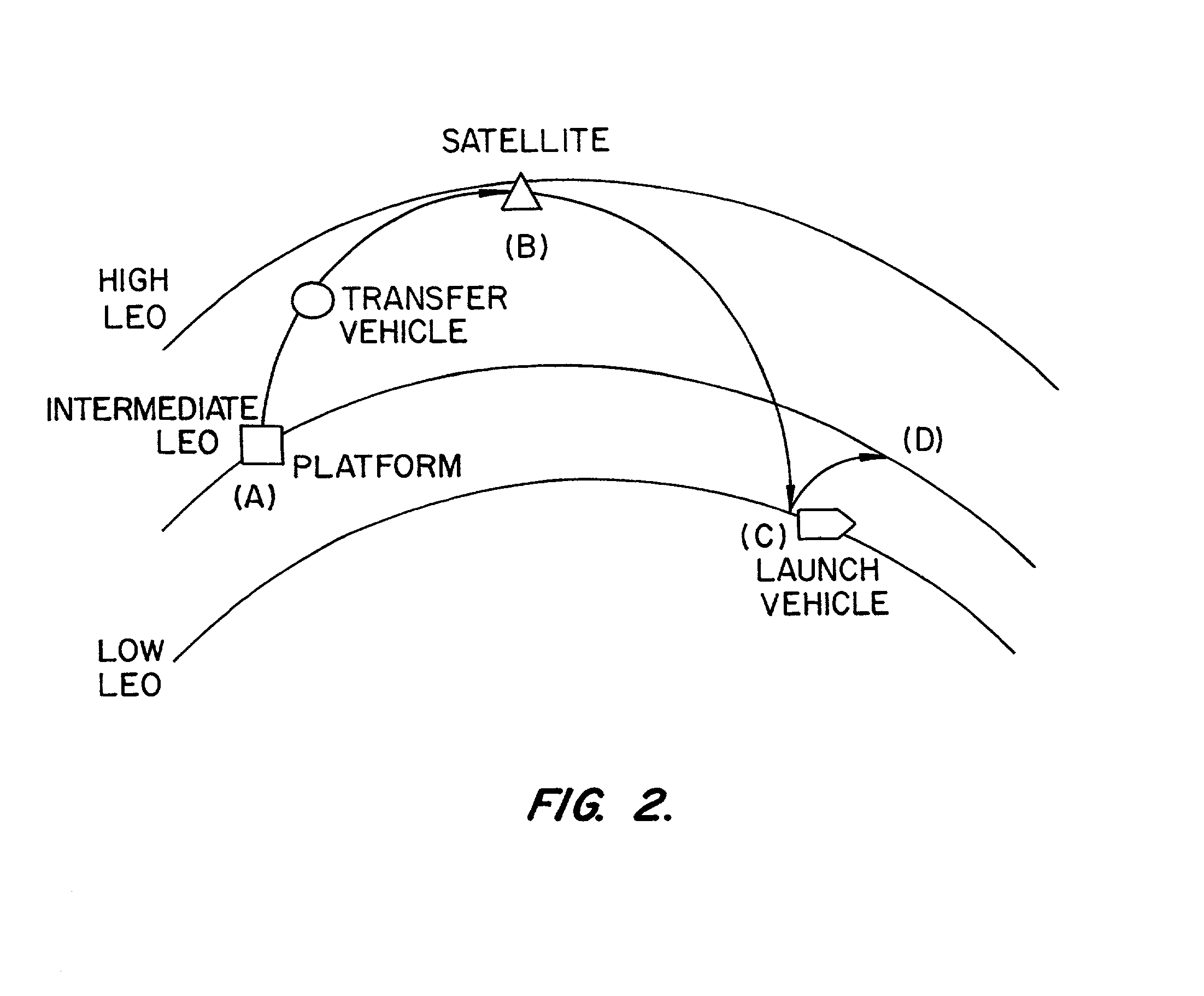Method of using dwell times in intermediate orbits to optimize orbital transfers and method and apparatus for satellite repair
a technology of orbital transfer and dwell time, applied in the field of orbital operations involving earth satellites, can solve the problems of power loss, loss of orientation in relation to the sun, and malfunction of leo satellites, and achieve the effects of reducing mission duration, reducing complexity, and reducing the cost of fuel delivery
- Summary
- Abstract
- Description
- Claims
- Application Information
AI Technical Summary
Benefits of technology
Problems solved by technology
Method used
Image
Examples
Embodiment Construction
[0031] Orbits around the Earth of differing altitudes, inclinations, and eccentricity will exhibit different "precession rates", which is taken herein to mean the rate at which the right ascension of the ascending node (RAAN) of an orbits plane rotates in a geocentric inertial (GCI) coordinate frame, as shown in FIG. 1.
[0032] A space vehicle can be stored in a parking orbit and then can be raised to the appropriate higher orbit to service or recover a malfunctioning satellite. The space vehicle can be used for servicing malfunctioning satellites in their relatively high orbits, but might also be used to transport a satellite to another orbit. For example, a malfunctioning satellite might be towed from a High LEO orbit so that it can be picked up and returned to earth on a reentry vehicle, such as the Space Shuttle, that could not reach the High LEO orbit itself. The satellite might also be towed to a platform, such as the International Space Station, in an intermediate orbit for rep...
PUM
 Login to View More
Login to View More Abstract
Description
Claims
Application Information
 Login to View More
Login to View More - R&D
- Intellectual Property
- Life Sciences
- Materials
- Tech Scout
- Unparalleled Data Quality
- Higher Quality Content
- 60% Fewer Hallucinations
Browse by: Latest US Patents, China's latest patents, Technical Efficacy Thesaurus, Application Domain, Technology Topic, Popular Technical Reports.
© 2025 PatSnap. All rights reserved.Legal|Privacy policy|Modern Slavery Act Transparency Statement|Sitemap|About US| Contact US: help@patsnap.com



